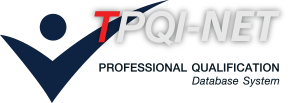หน่วยสมรรถนะ
Supervise civil aircraft maintenance activities and manage human resources in the workplace.
สาขาวิชาชีพการบิน
รายละเอียดหน่วยสมรรถนะ
| 1. รหัสหน่วยสมรรถนะ | AVT-CNOW-236A |
| 2. ชื่อหน่วยสมรรถนะ | Supervise civil aircraft maintenance activities and manage human resources in the workplace. |
| 3. ทบทวนครั้งที่ | / |
| 4. สร้างใหม่ |
|
ปรับปรุง |
|
| 5. สำหรับชื่ออาชีพและรหัสอาชีพ (Occupational Classification) | |
|
7232 Aircraft engine mechanics and fitters |
|
| 6. คำอธิบายหน่วยสมรรถนะ (Description of Unit of Competency) | |
| This skill unit requires application of supervisory and personnel management skills in the performance of all aviation maintenance activities. It covers the competencies required to supervise maintenance activities, apply human resource management practices applicable at the supervisor level, and contribute to workplace training and competency assessment during planned or unplanned maintenance. Work may be done individually or as part of a team. | |
| 7. สำหรับระดับคุณวุฒิ |
| 1 | 2 | 3 | 4 | 5 | 6 | 7 | 8 |
|---|---|---|---|---|---|---|---|
| 8. กลุ่มอาชีพ (Sector) | |
| 7232 Aircraft Mechanics | |
| 9. ชื่ออาชีพและรหัสอาชีพอื่นที่หน่วยสมรรถนะนี้สามารถใช้ได้ (ถ้ามี) | |
| N/A | |
| 10. ข้อกำหนดหรือกฎระเบียบที่เกี่ยวข้อง (Licensing or Regulation Related) (ถ้ามี) | |
| N/A | |
| 11. สมรรถนะย่อยและเกณฑ์การปฏิบัติงาน (Elements and Performance Criteria) |
| หน่วยสมรรถนะย่อย (EOC) | เกณฑ์ในการปฏิบัติงาน (Performance Criteria) | รหัส PC (ตามเล่มมาตรฐาน) |
รหัส PC (จากระบบ) |
|---|---|---|---|
| 101503.01 Plan, implement maintenance for teams and provide guidance, Monitor maintenance quality. |
101503.01.01 Able to identify, organize workload and interpret maintenance tasks from available maintenance data or schedules in accordance with enterprise procedures, able to allocate maintenance tasks to appropriate team members with consideration of individual’s experience and qualifications. |
101503.01.01 | 199401 |
| 101503.01 Plan, implement maintenance for teams and provide guidance, Monitor maintenance quality. |
101503.01.02 Able to provide guidance to staff, appropriate to the maintenance task and individual’s experience, including the communication of relevant maintenance data and procedures, check activities and guide personnel to ensure that maintenance is performed in accordance with the applicable documentation. |
101503.01.02 | 199402 |
| 101503.02 Perform human resource management activities and workplace training tasks at the supervisor level. |
101503.02.01 Able to identify and respond to Human factors affecting job performance, to minimize the possibility of maintenance errors, to maintain sound teamwork through an awareness of contributing factors and to maintain sound employment relations. |
101503.02.01 | 199403 |
| 101503.02 Perform human resource management activities and workplace training tasks at the supervisor level. |
101503.02.02 Able to deliver On-job training through the reinforcement of knowledge and skills gained in off-job training and guiding their application to specific on-job maintenance tasks, and to complete the Supervisor’s Verification portion of the Workplace History Sheets of the Log of Industrial Experience and Achievement. |
101503.02.02 | 199404 |
| 12. ความรู้และทักษะก่อนหน้าที่จำเป็น (Pre-requisite Skill & Knowledge) | |
|
N/A |
|
| 13. ทักษะและความรู้ที่ต้องการ (Required Skills and Knowledge) | |
|
(ก) ความต้องการด้านทักษะ N/A (ข) ความต้องการด้านความรู้ N/A |
|
| 14. หลักฐานที่ต้องการ (Evidence Guide) | |
|
(a) Performance Evidence |
|
| 15. ขอบเขต (Range Statement) | |
|
This part allows for different work environments and conditions that can affect performance. Essential operating conditions that may be present (depending on the work situation, needs of the candidate, accessibility of the item, and local industry and regional contexts) are included. |
|
| 16. หน่วยสมรรถนะร่วม (ถ้ามี) | |
| N/A | |
| 17. อุตสาหกรรมร่วม/กลุ่มอาชีพร่วม (ถ้ามี) | |
| N/A | |
| 18. รายละเอียดกระบวนการและวิธีการประเมิน (Assessment Description and Procedure) | |
|
• The assessment are based on combination of paper exams, interviewing, and practical demonstrations depending on the assessors’ judgement. |
|
